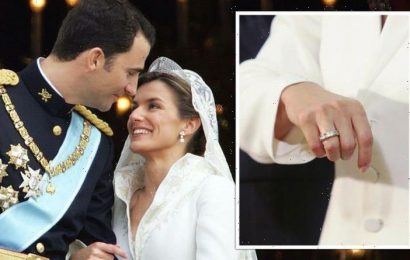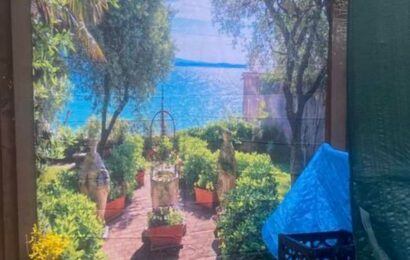Reporting here from the Department of Great State Occasions, Minutiae Division. Subject: swan plumes.
On the occasion of the long-awaited coronation of King Charles III, expect, please, several gem-barnacled crowns (one St. Edward’s, one Imperial and one recycled from Queen Mary and containing the Cullinan III, IV and V diamonds); varied items of sanctified regalia; one Stone of Destiny; two inherited and refurbished Robes of State and Estate (hand-embroidered with bees, a beetle, lady’s mantle, maidenhair fern, cornflower and delphinium); several dozen members (give or take) of the royal family; more than 2,000 assorted foreign dignitaries and invited guests; an unspecified quantity of anachronistic peers and peeresses attired in velvets and tiaras hauled out of vaults; and approximately 6,000 troops from throughout the Commonwealth in the largest military procession in London in 70 years. Among those will be Maj. Gen. Christopher John Ghika, the general commander of the household division.
While the greater focus of the world’s attention on May 6 will assuredly be on the principals in a ceremony with roots extending deep into England’s past, the minutiae subdivision will have as its particular interest a singular item of headgear that barely registers as an eye blink in the panoply of a coronation.
What is that thing? It is the humpbacked, bicorn hat with a strip of gold bullion to be worn by General Ghika, a decorated soldier and princely scion of the Romanian Ghica dynasty, and crowned with a swan plume.
While the hat is as handsome as it is archaic, it is the plume that concerns us here. It is a thing of snowy splendor, its dozens of white (and some red) feathers graduated in size to cascade over a stiffened base, the whole engineered to catch the wind and flare in any stirring of breeze.
“You will not see too many people wearing that hat,” said Nathan Kashket, the director and a fourth-generation scion of Kashket & Partners in London, specialists in the design and manufacture of uniforms for ceremony and parade (as well as the scarlet tunics worn by the guards outside Buckingham Palace, the dress uniforms of the Yeoman Warders of the Tower of London and the uniforms of the Royal Horse Artillery, the Household Cavalry Mounted Regiment and all five regiments of the Foot Guards).
And there is good reason you won’t, according to Maj. Gen. Alastair Bruce of Crionaich, the governor of Edinburgh Castle and a royal commentator for Sky News. “The swan feather was selected as an adornment to headdress in order to catch the wind in the field of battle,” Mr. Bruce said. In the distant days before mobile phones or walkie-talkies, “it was imperative to move communications around on the battlefields and to easily identify senior commanders.”
A messenger at Waterloo, for instance, could readily identify the Duke of Wellington — the so-called Iron Duke, best remembered for his victory over Napoleon in 1815 — by the feathers in his hat. Thus, the cockaded bicorn became an essential element in the full-dress ceremonial uniform of the most senior general officers in the British Army. And so, inevitably, the question arises of where to obtain one.
“I make them,” said Louis Chalmers, the proprietor of the Plumery, when reached by phone at his workshop in the Chiswick neighborhood of London. “In fact, I’m making one right this minute.”
Mr. Chalmers is 60. For more than two-thirds of his life, he has been in the business of creating plumes. He began as an apprentice at 19 and eventually purchased the business (then called Appleton Brothers) from the heirs of two former directors, expanding it to provide military plumes for the armies of Britain and Europe, the film and television industries, historical re-enactors, museums and the designer Alexander McQueen.
“You’ve probably seen our work all over and never thought about it,” said Mr. Chalmers, whose company makes plumes of horsehair or humanely harvested feathers in 60 patterns for the British armed forces alone. The horsehair bristle on the Achilles hero’s helmet that Brad Pitt wore in the 2004 Warner Brothers epic “Troy”? “That was us,” Mr. Chalmers said.
Yet aren’t swans, he was asked, a protected species in Britain? They are. And, while members of the genus Cygnus are considered nonaggressive, experts say, they would most likely not take kindly to random plucking. “The feathers are cast and collected,” General Bruce explained. “Grabbing a swan and pulling the feathers I would not recommend.”
As it happens, the season approaches when swans naturally shed their feathers in an annual molt, a process that begins when breeding is over and the first cygnets have begun to hatch. “It’s six weeks to go through the whole process,” said Charlie Wheeler, the manager of Abbotsbury Swannery, a nature preserve along an eight-mile lagoon on the Dorset coast, a place thought to have been a natural swan refuge since prehistoric times and documented as such as early as 1393.
Until the reign of Henry VIII and the dissolution of the monasteries, Benedictine monks cultivated swans there as deluxe comestibles. (Swan was a great banqueting delicacy.) Then the last abbot surrendered the property, and the site was passed to Sir Giles Strangways, one of whose descendants still owns it.
That person, Charlotte Townshend, is among the wealthiest Britons and one of the few people, other than the monarch, entitled to own swans. The powerful vintners and dyers guilds can own them, too, and so, of course, can King Charles III, whose many titles besides ruler of the United Kingdom and head of the Commonwealth include Sovereign of the Most Noble Order of the Garter and Seigneur of the Swans. Contrary to myth, the monarch does not own every swan in England but rather can lay claim to all the unmarked birds occupying a certain stretch of the Thames and has the royal prerogative to add to those any unmarked swans in his realm.
At Abbotsbury, the molting begins in June, and that is when the preserve’s manager, Charlie Wheeler, and his team begin to collect the feathers.
“We have anything from 600 to 800 swans on site,” Mr. Wheeler said. “And we’ll be going around with buckets most days picking them up for whatever order the Plumery has made.’’
It requires about 100 feathers to create a plume like the one General Ghika will wear, at a cost of roughly $1,200. “I shave them with a scalpel,” Mr. Chalmers explained, to produce an elegant cascading effect, one minute element in a spectacle grander than most are likely to witness twice in a lifetime.
Source: Read Full Article







